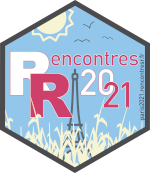Package `morse` is devoted to the analysis of experimental data collected from standard toxicity tests [@Baudrot2021]. It provides ready-to-use functions to visualize raw data and to estimate several toxicity indices to be subsequently used in support of environmental risk assessment in full compliance with regulatory requirements. Such toxicity indices are indeed classically requested by standardized regulatory guidelines on which national agencies base their evaluation of applications for marketing authorisation of active chemical substances.
Package `morse` can be used to get estimates of $LC_x$ ($x$\% Lethal Concentrations) or $EC_x$ ($x$\% Effective Concentrations) by fitting standard dose-response models on toxicity test data. Risk indicator estimates as well as model parameters are provided along with the quantification of their uncertainty. Package `morse` can also be used to get estimates of $NEC$ (No Effect Concentrations) by fitting a Toxicokinetic-Toxicodynamic (TKTD) model (namely `GUTS` models, that is *General Unified Threshold models of Survival*). Using `GUTS` models also allows to get estimates of $LC_{(x,t)}$ (whatever $x$ and $t$) and $LP_{(x,t)}$ ($x$\% Lethal Profile), this later being defined by the European Foof Safety Authority as the $x$\% multiplication factor leading to an additional reduction of $x$\% in survival at the end of an exposure profile. Above all, `GUTS` models can be used under environmentally realistic time-variable exposure profiles, package `morse` providing all features to easily perform prediction of the survival over time associated with the uncertainty, propagated from a previous calibration process.
This talk will illustrate a typical use of package with survival data collected over time and at different increasing exposure concentrations, analysed with the reduced version of GUTS models based on the stochastic death hypothesis (namely, the `GUTS-RED-SD` model). This case studies can then be followed step-by-step to analyse any new data set, as long as the data set is correctly formatted.
- Poster




